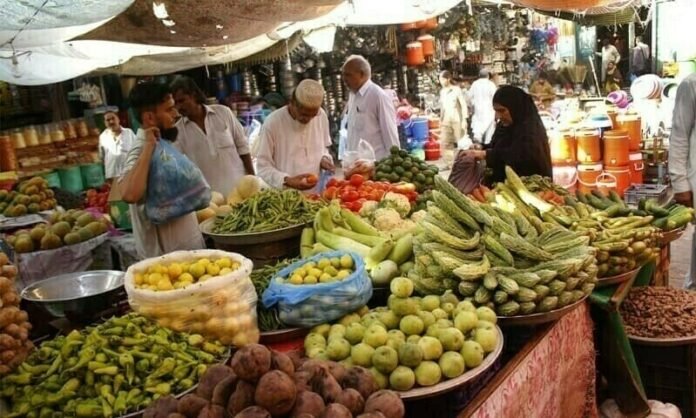The average pace of price increases (inflation) for approximately 600 goods slowed further to 4.1% in December, creating additional room for a potential policy rate cut this month without jeopardizing fiscal or external sector stability.
According to the Pakistan Bureau of Statistics (PBS), inflation measured by the Consumer Price Index (CPI) eased to 4.1% in December compared to the same month last year.
This deceleration aligns with federal government expectations but falls short of the central bank’s forecast, which had anticipated a slight rise. The central bank had projected a gradual increase in inflation from December onward due to the “phasing out of base effect.”
Last week, the Ministry of Finance stated that inflation could range between 4-5%. The State Bank is set to convene its next monetary policy meeting later this month to decide on the policy rate.
After reducing the rate from 22% to 13%, there remains room for a more significant cut. The economy grew by just 0.92% during the first quarter of the fiscal year, with industries struggling due to high production costs and inconsistent economic policies.
Businesses are in dire need of stimulus through lower energy costs, reduced operational expenses, and consistent policies. Without single-digit interest rates and political and policy stability, business expansion is unlikely.
For the current fiscal year, the government set an inflation target of 12%, though the IMF projects it at 9.5%. Average inflation for the first six months (July-December) was 7.2%, significantly below the annual target.
Core inflation, which excludes energy and food items, also declined to 8.1% in urban areas and 10.7% in rural regions. The average core inflation rate is approximately 4% lower than the policy rate, providing scope for the central bank to lower the rate by about three percentage points.
Urban inflation eased to 4.4% due to slower increases in energy and food prices, while rural inflation dropped to 3.6%, driven by reduced food inflation, according to PBS data. The impact was particularly evident in towns and villages.
The PBS collects inflation data from 35 cities covering 356 consumer items and from 27 rural centers covering 244 items. Food inflation increased by 2.5% in cities, whereas rural areas experienced deflation of around 0.5%. Perishable food prices rose by 11% year-on-year, driven by higher prices of onions, fresh vegetables, and fruits, while non-perishable food prices fell by 1.4% due to lower wheat and wheat flour prices.
Among food items, the cost of pulse gram increased by 54%, gram flour by 52%, tomatoes by 44%, potatoes by 37%, and pulse moong by 35%. Fish prices rose by 25%, gram whole by 24%, honey by 23%, meat by 21%, milk powder by 21%, and fresh fruits by 12%. Fresh milk and vegetable prices increased by 10%.
Wheat and flour prices have decreased by 34% this fiscal year due to the premature withdrawal of agricultural support prices.
Tax hikes on vehicles led to a 169% increase in motor vehicle taxes, according to PBS.
Nominal GDP growth is around 8%, falling short of the Federal Board of Revenue’s (FBR) projected 16% growth used to estimate revenue. This shortfall, combined with weak enforcement, has reduced FBR’s collections by approximately Rs386 billion.
The FBR attributes its underperformance to slowing inflation, sluggish industrial growth, and minimal growth in imports.
Read more: NADRA to Launch New B-Form with Fingerprints and Photos





